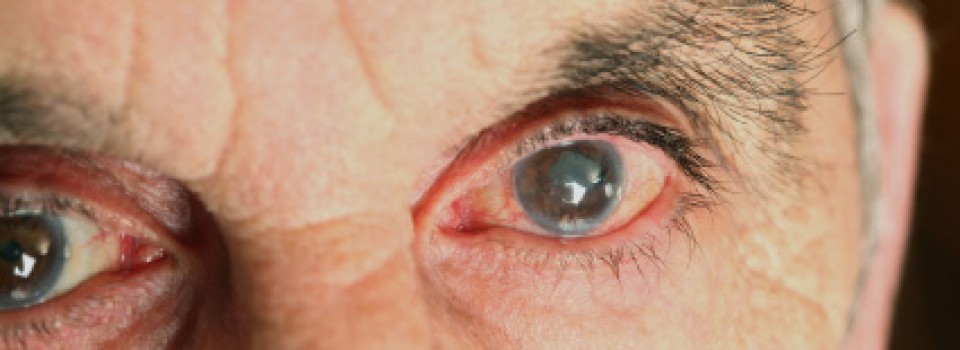Significance
Genome-wide association studies have identified two major risk loci for age-related macular degeneration (AMD) on chromosome (Chr) 1 and Chr10. Here, we use proteomics to analyze submacular stromal tissue punches from older eye donors without AMD, comparing tissue from donors who were homozygous for high-risk alleles at Chr1 or Chr10 with tissue from donors with low risk at these two loci. A common change found in Chr1/Chr10–risk eyes was increased mast cell proteases, and immunohistochemistry confirmed the presence of increased mast cell numbers. This study, therefore, provides a unifying mechanistic link between Chr1 and Chr10 risk and suggests that mast cell infiltration of the choroid and degranulation are early events in AMD pathogenesis.
Abstract
Age-related macular degeneration (AMD) is a leading cause of visual loss. It has a strong genetic basis, and common haplotypes on chromosome (Chr) 1 (CFH Y402H variant) and on Chr10 (near HTRA1/ARMS2) contribute the most risk. Little is known about the early molecular and cellular processes in AMD, and we hypothesized that analyzing submacular tissue from older donors with genetic risk but without clinical features of AMD would provide biological insights. Therefore, we used mass spectrometry–based quantitative proteomics to compare the proteins in human submacular stromal tissue punches from donors who were homozygous for high-risk alleles at either Chr1 or Chr10 with those from donors who had protective haplotypes at these loci, all without clinical features of AMD. Additional comparisons were made with tissue from donors who were homozygous for high-risk Chr1 alleles and had early AMD. The Chr1 and Chr10 risk groups shared common changes compared with the low-risk group, particularly increased levels of mast cell–specific proteases, including tryptase, chymase, and carboxypeptidase A3. Histological analyses of submacular tissue from donors with genetic risk of AMD but without clinical features of AMD and from donors with Chr1 risk and AMD demonstrated increased mast cells, particularly the tryptase-positive/chymase-negative cells variety, along with increased levels of denatured collagen compared with tissue from low–genetic risk donors. We conclude that increased mast cell infiltration of the inner choroid, degranulation, and subsequent extracellular matrix remodeling are early events in AMD pathogenesis and represent a unifying mechanistic link between Chr1- and Chr10-mediated AMD.







